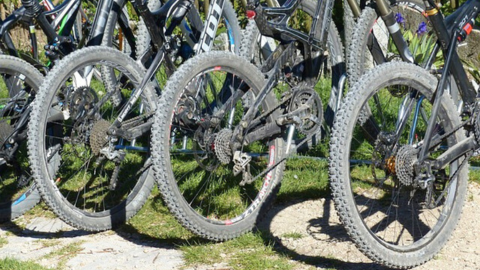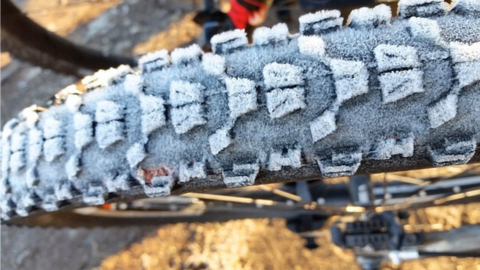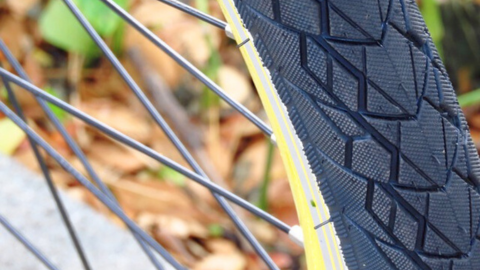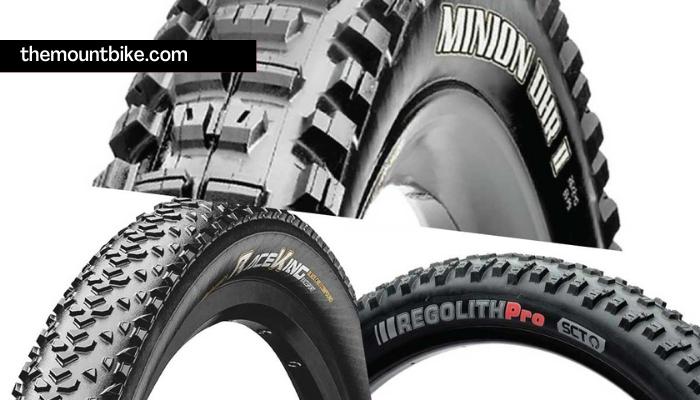Tubeless tires function by creating a solid seal between your tire rim and wheel. Tubeless tires mean saying goodbye to your inner tubing that made your tires puncture so much.
Tubeless tires have been a blessing and changed the tubing game forever. Inner tubing needed extra care and protection. Even with the best protection gear, you’d still find objects embedded in your tire, causing punctures.
This is when tubeless tires came in and created evolution. Having tubeless tires means not thinking about objects being pierced through your tire as much. Tubeless tires have helped prevent sharp objects from getting stuck to your bike and maintain the bike’s air pressure.
We detail how mountain bike tubeless tires work and why you need one.
Let’s get to work.
How does Tubeless Tires Work?

A tubeless tire looks like your average tire, except it requires no extra tubing. After its placement, it automatically snaps into place without any hassle. You confirm the order by using latex.
Tubeless tires have valves in them. Using this valve, you insert latex and seal the tire. The liquid latex helps to fill minor holes in the tire. The liquid latex basically attaches the tubeless tire to the bicycle’s rim.
Tubeless tires are used by professional mountain bikers, ditching the traditional inner tubes. It’s better this way, you don’t have to worry about inner tubes, and tubeless tires manage the air pressure within the tire just right.
What are the Advantages of Using a Tubeless Tire?
Tubeless tires improve the overall experience of mountain biking. But we have a specified list of how it helps.
Fewer Punctures
A pretty obvious one, tubeless tires have fewer punctures than tubed wires. While riding through rough trails with a tubed wire, you have to be extra careful, as sharp objects or bumps can hurt the inner tubing and cause a puncture.
But with tubeless tires, you have to worry about none of that because there is no inner tubing to start with. Tubeless tires eliminate the possibility of tire punctures significantly as there’s no tubing.
Lower Air Pressure
As there is no inner tubing, you can adjust the air pressure to your needs. You can use either low or high pressure. Using low air pressure with tubed tires is risky as tubed tires risk being punctured with low air pressure.
With tubeless, you can drop the pressure and not worry as it has higher puncture resistance. Lower pressure improves riding by fewer sudden movements not caught by your bike’s suspension.
Drop Weight
Less weight isn’t that much of a difference from the first two. Tubing doesn’t weigh that much. However, while free riding, you’ll notice how light your mountain bike feels after you have gone tubeless.
Besides, the noticeable weight change will enhance your speed, helping you accelerate and ride at a higher speed. You’ll notice the difference while going uphill the most.
Aside from these significant differences, you will feel more grip and control of your mountain bike if you get tubeless tires.
What Are the Disadvantages of Tubeless Tires?

Tubeless tires do so much for mountain bikes, but everything comes with a price. Here are some of the cons of tubeless tires:
It is expensive
Tubeless tires are naturally more expensive than tubed tires. However, if you think about it, they have more value than what you’re paying for. And most brands these days have tubeless tire options, so you don’t have to worry about it fitting to your bike.
Hefty Instalment
Tubeless tires sit between your rim and the wheel. Installing the tire could be a challenge as you have to ensure it’s sealed properly. Or whether it has been attached by the latex. The seal must be airtight for it to stick.
With tubed tires, all you have to do is put it inside the tire and pump air. So this could be a drawback for some people.
Requires frequent servicing
If you’re not servicing your tubeless tire, lack of servicing could clog the tire and ultimately decrease your speed. Which does more harm than good; tubeless tires require attention. Your sealant will dry off if you ignore it.
Besides, air loss occurs between rides, especially during heavy riding sessions. So you have to look out for that.
How to Set Up Tubeless Tires?
The installation of tubeless tires might be intimidating for some. That’s where we come to the rescue; here is how you can set up tubeless tires easily:
You will need the following tools:
- Tubeless tires (of course)
- Tubeless rim strip tape
- Valve
- Sealant
The installation is not that hard, trust us.
- Put rim strip tape next to the tubeless valve system. Your tire should come with guidelines.
- Make a hole in the valve system.
- Work your way into the wheel rim. Go for one at a time; take your time with this.
- Insert the right amount of sealant. We prefer inserting to directly pouring. But you choose whatever you’re comfortable with.
- Install the beads/heads one by one
- Inflate your tire correctly.
- Check the air pressure.
And that’s it! That wasn’t so tough, was it? Willpower and some spare minutes from your life are all you need. You’re welcome; you saved yourself a couple of bucks by doing it yourself rather than taking it to the bike shop.
How to Fix a Tubeless Tire On-road and Off-road?

Now that you know how a tubeless tire works, how to put on one, and the pros and cons. There’s a possibility of something wrong going on and the tires being damaged while you’re on a ride. As they lack tubing, you can’t just add an extra tube.
If you have sharp objects piercing your tire, you can fix these minor punctures with a tire plug. If you’re on the go, tire plugs could be a lifesaver.
Another common problem is air loss. If you notice air loss occurring while riding, re-inflate the tire; if you’re on the trail, you can use a regular air pumper if you lack access to an air compressor.
Final Thoughts
Tubeless tires are undoubtedly better than tubed tires. It saves time and energy. The tubeless tires work by clamping themselves to the rim automatically. They use liquid latex and a sealant through valve systems and function like a regular tire.
Tubeless tires have higher puncture resistance, and you can adjust your air pressure, and save some weight from the overall mountain bike. However, it costs more money and often needs servicing, and installation can be intimidating.
Well, there’s a price to pay for everything. You are getting a better riding experience, so some compromises won’t hurt.

I am Ryan Ford, a mountain biking enthusiast who loves to explore the outdoors. I also like to go on adventures with friends and anything else that involves being outside. I love my bike because it gets me out of the house and gives me an opportunity to enjoy nature.

